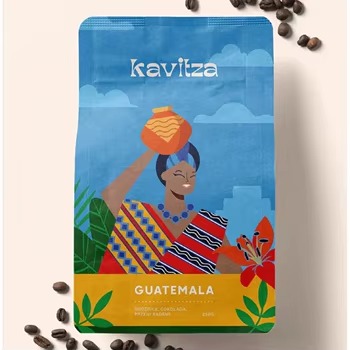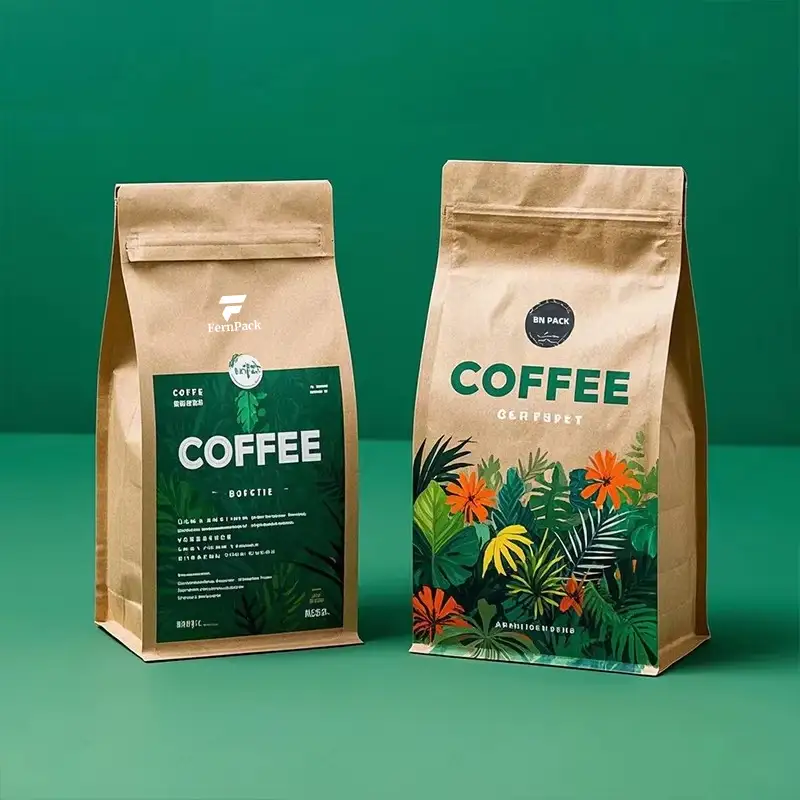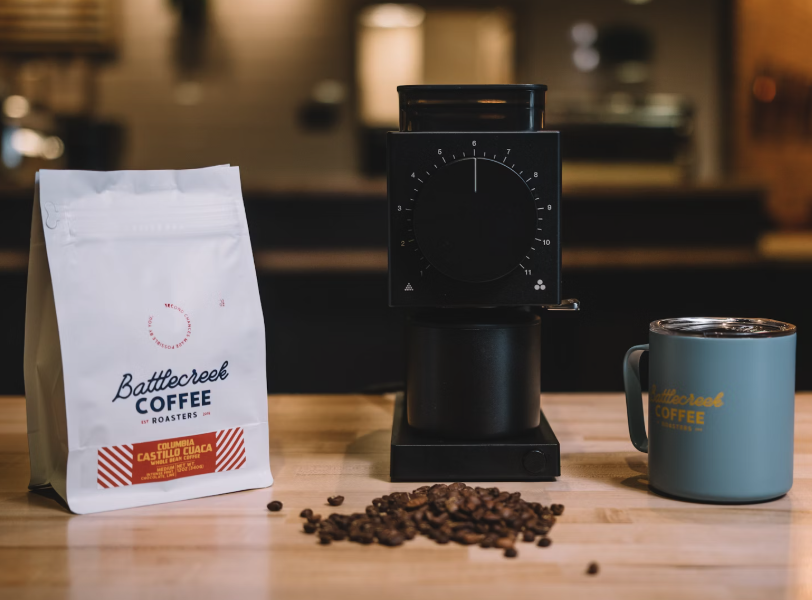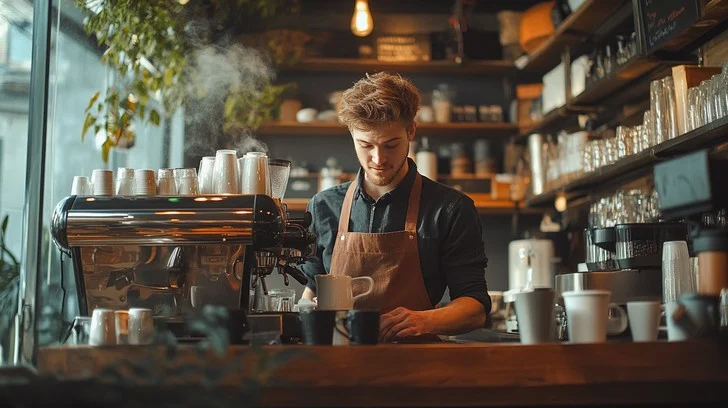The specialty coffee industry has evolved from a niche community into a globally conscious movement. Beyond quality and transparency, today’s consumers expect brands to demonstrate environmental responsibility. As climate change and waste management concerns continue to escalate, compostable coffee bags have emerged as a tangible way for roasters to align with the values of sustainability. But what does “compostable” really mean for your operations, and how do you ensure this transition brings actual value, not just good topics?
Understanding the trade-offs, certification hurdles, and functional limitations is crucial. Compostable bags are not just another SKU, they represent a broader operational and ethical commitment. Roasters considering the switch need to evaluate whether this shift aligns with their shelf life requirements, distribution models, and long-term brand narrative.
Compostable ≠ Biodegradable ≠ Recyclable: Clearing the confusion
It’s common to see the terms “compostable,” “biodegradable,” and “recyclable” used interchangeably—but in practice, they refer to very different material behaviors:
- Compostable packaging is designed to fully break down into non-toxic components under composting conditions within a specific timeframe, usually 90–180 days. However, this only applies under controlled composting conditions—typically in industrial facilities.
- Biodegradable materials degrade over time, but without a fixed timeline or environmental conditions. A biodegradable plastic might take years to break down and still leave behind microplastics.
- Recyclable packaging refers to materials that can be collected, processed, and reused, yet most flexible food packaging today is not recyclable in municipal systems due to multilayer construction.
For a roaster, this distinction matters. Mislabeling or misunderstanding these categories can mislead customers and create reputational risks. Brands must be precise in their language and clear about what happens to their packaging at the end of its life.

What compostable coffee bags are actually made of
Compostable coffee pouches are typically constructed from multilayer biomaterials that aim to replicate the performance of traditional plastic laminates. Some common material combinations include:
- PLA (Polylactic Acid): A thermoplastic derived from renewable resources like corn starch or sugarcane. PLA is commonly used as the inner barrier layer in compostable pouches. It offers decent oxygen resistance but can be sensitive to heat and humidity.
- PBAT (Polybutylene Adipate Terephthalate): A biodegradable polymer that adds flexibility and toughness to the structure. Often used in combination with PLA to improve sealability and durability.
- Cellulose-based films: Sourced from wood pulp, these provide high transparency and can be certified as home-compostable, although they typically lack moisture resistance.
- Natural papers (kraft, rice paper): These serve as the outer layer, providing aesthetic appeal and print compatibility. Paper also signals sustainability visually, even though it adds little to barrier performance.
It’s crucial to remember that a pouch’s compostability depends on the composition of all its components, including films, inks, adhesives, degassing valves, and zippers. Roasters should always request full documentation and run pilot tests before committing to large-scale adoption.
Performance trade-offs: Balancing barrier, shelf life, and production
While compostable packaging has made substantial technical progress, it still involves notable compromises in functionality:
- Barrier properties: Compostable films generally offer lower moisture and oxygen barriers than aluminum or PE laminates. For coffee, which is highly sensitive to both, this may limit shelf life to 3–6 months, depending on the roast level, grind size, and storage conditions. Roasters distributing regionally or operating with fast turnover may find this acceptable, but others may not.
- Heat sealability: Compostable laminates often require higher heat and longer dwell times for proper sealing. This can cause difficulties on standard vertical form-fill-seal (VFFS) machines or in automated filling lines. Improper seals lead to air ingress and quality degradation.
- Compatibility with degassing valves: Conventional one-way valves are typically plastic-based and not compostable. Switching to PLA-based valves may affect degassing performance or shorten usable life. Some roasters choose to forgo valves altogether, especially when packaging whole beans for immediate consumption.
- Print performance: Water-based and soy-based inks can work well on compostable substrates, but color vibrancy and ink adhesion should be tested—particularly for digitally printed small-batch runs. Not all printers are familiar with compostable substrates.
Understanding these variables helps you decide whether compostable packaging aligns with your operational priorities, not just your ideals. For instance, compostable pouches may be perfectly suited for small-batch or seasonal releases where fast turnover and local distribution minimize the risks posed by shorter shelf lives and reduced barrier strength. They’re also a compelling option for subscription-based models or direct-to-consumer formats, where you can better control freshness cycles.
However, if your business involves wholesale export, complex logistics, or extended shelf requirements—such as multi-month supermarket displays or overseas shipping—these materials may underperform, leading to potential quality loss or supply chain inefficiencies.
As for the packaging production process itself, most small-to-medium roasters don’t need to manage the technical details of lamination, coating, or valve integration—but it’s still important to understand how these factors affect seal strength, print quality, and compostability when selecting a supplier or evaluating production samples. In short, you need to judge performance holistically, not just rely on the label “compostable.”

From material performance to practical adoption
The technical limitations of compostable bags—whether in sealing strength, valve compatibility, or print behavior—aren’t deal-breakers, but they are reality checks. A packaging solution that fails to seal consistently, loses ink clarity, or lets air in too soon can compromise product quality and consumer trust.
That’s why operational feasibility must always precede marketing messaging. If you’re introducing compostable packaging, pilot tests with your own filling machines, printers, and storage conditions are essential. Some roasters may even find a hybrid strategy—such as compostable pouches without valves for limited runs—a more realistic starting point.
By mastering these small but critical material decisions, you turn compostable packaging from a risky experiment into a reliable tool in your business model.
Certification is not optional: Which labels matter—and Why
Without third-party validation, claims of compostability can lead to greenwashing or legal trouble. The most widely accepted certifications include:
- OK Compost Industrial / OK Compost Home (by TÜV Austria): Confirms breakdown in either industrial or home composting systems.
- BPI Certification (Biodegradable Products Institute): Widely recognized in North America; aligned with ASTM D6400 standard.
- EN 13432 (European standard): Requires disintegration, biodegradation, and eco-toxicity testing.
Be aware that some packaging may only have a compostable inner film, while the rest of the structure (valve, zipper, ink) remains non-compostable. This limits the usefulness of the certification. For real compliance, roasters should request documentation at the finished pouch level, not just individual material layers.
Moreover, these certifications should be aligned with your target markets. For instance, packaging certified only for industrial composting may not be ideal if your consumer base doesn’t have access to municipal composting systems.

Should you switch? strategic questions to ask first
Not every roaster will benefit equally from compostable packaging. Consider the following questions before making the switch:
- What is your average product turnover time? If your coffee sits in inventory or on retail shelves for more than six months, compostable films might not provide adequate protection.
- Where are your customers located? If you ship across regions or export, ensure the packaging survives variable humidity and transit conditions.
- Do you market sustainability as a brand pillar? Compostable packaging is more credible when paired with transparency about sourcing, certifications, and disposal practices.
- Do your customers have access to composting infrastructure? If not, your compostable bags may end up in landfills, undermining their purpose.
Compostable coffee bags make the most sense for local roasters, fast-turnover products, and brands looking to differentiate through visible environmental leadership. For others, the ROI may be marginal until materials improve or infrastructure expands.
Misconceptions that can cost you
Many roasters approach compostable packaging with assumptions that don’t always hold up:
- Compostable equals zero-waste: Unless customers actually compost the bags, they may simply add to landfill waste.
- All compostables are the same: Industrial vs home compostability makes a huge difference. Materials that degrade in one setting may not break down at all in another.
- You can use the same production line: Not always true. Higher seal temps, film stiffness, and valve compatibility may require retooling or new equipment.
- It’s always more sustainable: Compostable materials still require energy-intensive sourcing (e.g., PLA from corn) and may compete with food systems.
Educating yourself and your customers is just as important as switching materials. Packaging sustainability is about systems, not just single-product choices.
How packaging tells your sustainability story
Coffee packaging isn’t just functional—it’s your brand’s most visible ambassador. A compostable coffee bag sends a powerful signal, especially when backed by certifications, clear messaging, and product integrity. It shows you care about what happens after your product is consumed.
But beware of overpromising. Vague statements like “eco-friendly” or “green packaging” can confuse customers or trigger backlash. Instead, focus on specifics: use symbols like OK Compost Home, explain how to dispose of the bag, and tell the story of your material choices. Share your reasons for switching and the challenges you overcame.
Some brands go further by:
- Launching consumer education campaigns
- Offering bag return or collection programs
- Collaborating with composting services
When done authentically, compostable packaging can create stronger customer loyalty, spark word-of-mouth marketing, and distinguish your coffee in a saturated market.
Compostable bags are a strategy—Not just a material swap
Switching to compostable packaging is a strategic decision, not a trend-chasing move. It touches every aspect of your value chain: sourcing, production, logistics, customer education, and brand positioning. Done well, it can drive competitive advantage, but done poorly, it risks disappointing customers and eroding trust.
The right time to adopt compostable coffee bags is when your supply chain, shelf life, customer base, and brand mission are aligned. At FernPack, we work closely with roasters to evaluate readiness, test materials, and design custom solutions that work in practice—not just in theory.
Whether you’re planning a limited release or a full transition, compostable coffee pouches can help tell a more sustainable, future-facing story—if you know how to use them well.




